KOCH (Neil Barsky, 2012)
Film Society of Lincoln Center, Walter Reade Theater
70 Lincoln Center Plaza, 65th St. at Amsterdam Ave.
Thursday, January 10, $13, 6:00; Sunday, January 13, $13, 3:30
Festival runs January 9-24
212-875-5601
www.thejewishmuseum.org
www.kochthemovie.com
www.filmlinc.com
 A bunch of people have a whole lot to say about Ed Koch in a new documentary about the charming yet irascible former three-term mayor of New York City, but none of them goes on quite so eloquently as Hizzoner himself. Longtime journalist and first-time filmmaker Neil Barsky delves into the man behind the legend, the upstart politician who helped save New York from the debt- and crime-ridden 1970s through, among other things, the sheer force of his immense will. Barsky combines new interviews with such political journalists as Michael Goodwin, Sam Roberts, and Wayne Barrett, along with former comptroller Carl McCall and the Rev. Calvin O. Butts, to paint a portrait of Koch as both mensch and meanie, a bully who always speaks his mind and never backs down from a challenge. Barsky and editor Juliet Weber include archival photographs and old film footage of Koch in the 1960s and early 1970s as he first takes on Democratic Party boss Carmine DeSapio, then runs for city council and Congress before getting into a heated seven-person race for mayor in 1977. The present-day Koch is filmed tinkering around in his small kitchen, breaking the Yom Kippur fast with his family, and relaxing in his office, sharing his views on his legacy, his battles with the black community over Sydenham Hospital, and even questions of his sexuality — but only up to a point — that have followed him throughout his career. Although Barsky claims in his director’s statement that “with the exception of one former governor and one former mayor, virtually everyone we reached out to agreed to be interviewed,” the film suffers in that it does not exactly boast an all-star lineup of pundits talking about Koch– but it of course has Koch himself, and that is more than enough. Koch, which opens theatrically February 1, is screening January 10 and 13 at the twenty-second annual New York Jewish Film Festival, presented by the Jewish Museum and the Film Society of Lincoln Center, with Barsky on hand for the January 10 show and the now-eighty-nine-year-old Koch in attendance January 13.
A bunch of people have a whole lot to say about Ed Koch in a new documentary about the charming yet irascible former three-term mayor of New York City, but none of them goes on quite so eloquently as Hizzoner himself. Longtime journalist and first-time filmmaker Neil Barsky delves into the man behind the legend, the upstart politician who helped save New York from the debt- and crime-ridden 1970s through, among other things, the sheer force of his immense will. Barsky combines new interviews with such political journalists as Michael Goodwin, Sam Roberts, and Wayne Barrett, along with former comptroller Carl McCall and the Rev. Calvin O. Butts, to paint a portrait of Koch as both mensch and meanie, a bully who always speaks his mind and never backs down from a challenge. Barsky and editor Juliet Weber include archival photographs and old film footage of Koch in the 1960s and early 1970s as he first takes on Democratic Party boss Carmine DeSapio, then runs for city council and Congress before getting into a heated seven-person race for mayor in 1977. The present-day Koch is filmed tinkering around in his small kitchen, breaking the Yom Kippur fast with his family, and relaxing in his office, sharing his views on his legacy, his battles with the black community over Sydenham Hospital, and even questions of his sexuality — but only up to a point — that have followed him throughout his career. Although Barsky claims in his director’s statement that “with the exception of one former governor and one former mayor, virtually everyone we reached out to agreed to be interviewed,” the film suffers in that it does not exactly boast an all-star lineup of pundits talking about Koch– but it of course has Koch himself, and that is more than enough. Koch, which opens theatrically February 1, is screening January 10 and 13 at the twenty-second annual New York Jewish Film Festival, presented by the Jewish Museum and the Film Society of Lincoln Center, with Barsky on hand for the January 10 show and the now-eighty-nine-year-old Koch in attendance January 13.
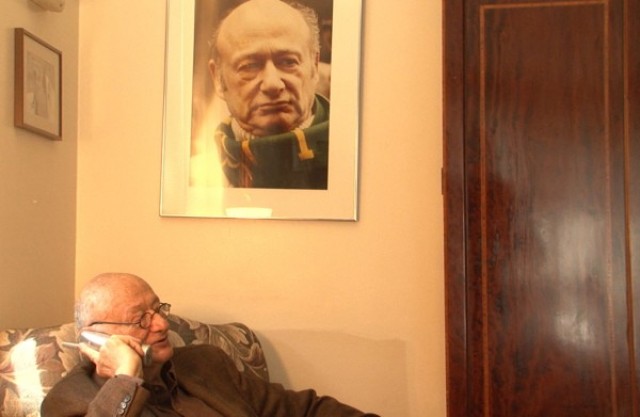
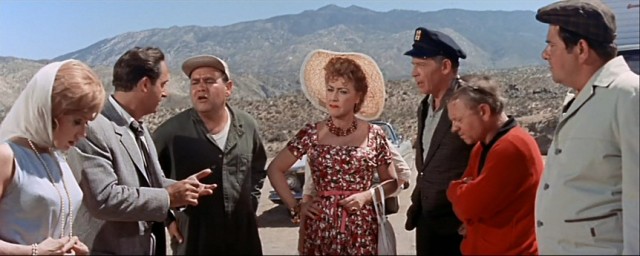
 They don’t come much crazier than the madcap 1963 comedy It’s a Mad Mad Mad Mad World. Producer-director Stanley Kramer takes a sharp turn with the wacky film, clearly needing a laugh following his rather serious string of issue pictures: The Defiant Ones, On the Beach, Inherit the Wind, and Judgment at Nuremberg. As he lays dying after a car crash, master thief Smiler Grogan (Jimmy Durante) tells a group of onlookers that there is $350,000 buried under a “big W” in Santa Rosita State Park. And off they go in search of the prize, willing to do just about anything and everything in order to get their greedy hands on the money. Hot on their trail is police captain T. G. Culpeper (Spencer Tracy), trying to solve one last case before he retires. It’s a Mad, Mad, Mad, Mad World lives up to its title, a mad, mad, mad, mad epic featuring the greatest all-star comedic cast ever assembled, including Sid Caesar, Edie Adams, Mickey Rooney, Buddy Hackett, an absolutely lunatic Jonathan Winters, Terry-Thomas, Phil Silvers, Dick Shawn, Peter Falk, Eddie “Rochester” Anderson, and Ethel Merman in addition to cameos by Jerry Lewis, Jack Benny, Joe E. Brown, Howard Da Silva, Andy Devine, Norman Fell, Selma Diamond, Leo Gorcey, Jim Backus, Marvin Kaplan, Stan Freberg, Arnold Stang, Jesse White, Carl Reiner, Don Knotts, Buster Keaton, and the Three Stooges. Basically, you can’t blink during the film’s 161 minutes or you’ll miss someone or some incredibly silly slapstick moment. And the ending is a laugh riot — literally. It’s a Mad, Mad, Mad, Mad World is screening December 22 and December 28 as part of the Film Society of Lincoln Center series “See It in 70MM!,” comprising fifteen films being shown in their original 70mm glory, beginning December 21 with Stanley Kubrick’s 2001: A Space Odyssey and continuing through January 1 with such other works as Ron Fricke’s Baraka, John Ford’s Cheyenne Autumn, Kenneth Branagh’s Hamlet, Basil Dearden’s Khartoum, Richard Brooks’s Lord Jim, and Jacques Tati’s Playtime.
They don’t come much crazier than the madcap 1963 comedy It’s a Mad Mad Mad Mad World. Producer-director Stanley Kramer takes a sharp turn with the wacky film, clearly needing a laugh following his rather serious string of issue pictures: The Defiant Ones, On the Beach, Inherit the Wind, and Judgment at Nuremberg. As he lays dying after a car crash, master thief Smiler Grogan (Jimmy Durante) tells a group of onlookers that there is $350,000 buried under a “big W” in Santa Rosita State Park. And off they go in search of the prize, willing to do just about anything and everything in order to get their greedy hands on the money. Hot on their trail is police captain T. G. Culpeper (Spencer Tracy), trying to solve one last case before he retires. It’s a Mad, Mad, Mad, Mad World lives up to its title, a mad, mad, mad, mad epic featuring the greatest all-star comedic cast ever assembled, including Sid Caesar, Edie Adams, Mickey Rooney, Buddy Hackett, an absolutely lunatic Jonathan Winters, Terry-Thomas, Phil Silvers, Dick Shawn, Peter Falk, Eddie “Rochester” Anderson, and Ethel Merman in addition to cameos by Jerry Lewis, Jack Benny, Joe E. Brown, Howard Da Silva, Andy Devine, Norman Fell, Selma Diamond, Leo Gorcey, Jim Backus, Marvin Kaplan, Stan Freberg, Arnold Stang, Jesse White, Carl Reiner, Don Knotts, Buster Keaton, and the Three Stooges. Basically, you can’t blink during the film’s 161 minutes or you’ll miss someone or some incredibly silly slapstick moment. And the ending is a laugh riot — literally. It’s a Mad, Mad, Mad, Mad World is screening December 22 and December 28 as part of the Film Society of Lincoln Center series “See It in 70MM!,” comprising fifteen films being shown in their original 70mm glory, beginning December 21 with Stanley Kubrick’s 2001: A Space Odyssey and continuing through January 1 with such other works as Ron Fricke’s Baraka, John Ford’s Cheyenne Autumn, Kenneth Branagh’s Hamlet, Basil Dearden’s Khartoum, Richard Brooks’s Lord Jim, and Jacques Tati’s Playtime.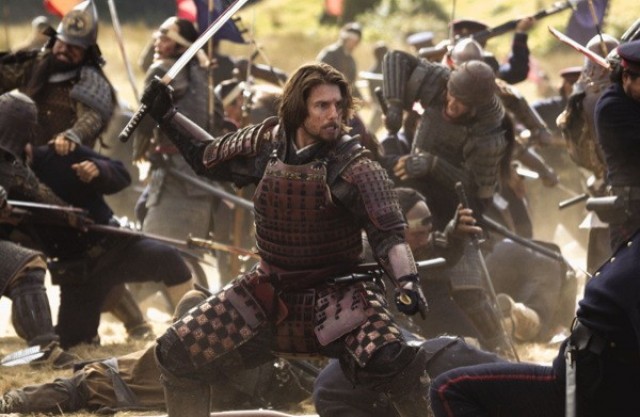
 The guys who gave the world Thirtysomething (director Edward Zwick and producer Marshall Herskovitz) head to the hills of Japan for this ridiculously sappy and melodramatic piece of tripe starring Tom Cruise as a wayward Civil War hero who rediscovers himself and learns the way of the samurai as modernity threatens to bury the past in a battle of guns versus swords, power versus honor, the government versus the individual. Cruise dances with warriors through this pathetic excuse for an American samurai epic that reduces everything to annoying clichés. It’s an embarrassment from start to finish; at least a sequel is pretty much out of the question. And it’s painful how the film misuses the talent of Hiroyuki Sanada, who was so good in Yoji Yamada’s The Twilight Samurai, his previous film. This mess was written by John Logan, who is responsible for such other duds as Martin Scorsese’s vastly overrated The Aviator and Nemesis, perhaps the worst of all the Star Trek films. The Last Samurai is screening on December 20 at 3:30 as part of the Film Society of Lincoln Center series “All the Right Moves: The Films of Tom Cruise,” comprising seven Cruise favorites, including Risky Business, Rain Man, Jerry Maguire, Mission: Impossible, Born on the Fourth of July, and Top Gun.
The guys who gave the world Thirtysomething (director Edward Zwick and producer Marshall Herskovitz) head to the hills of Japan for this ridiculously sappy and melodramatic piece of tripe starring Tom Cruise as a wayward Civil War hero who rediscovers himself and learns the way of the samurai as modernity threatens to bury the past in a battle of guns versus swords, power versus honor, the government versus the individual. Cruise dances with warriors through this pathetic excuse for an American samurai epic that reduces everything to annoying clichés. It’s an embarrassment from start to finish; at least a sequel is pretty much out of the question. And it’s painful how the film misuses the talent of Hiroyuki Sanada, who was so good in Yoji Yamada’s The Twilight Samurai, his previous film. This mess was written by John Logan, who is responsible for such other duds as Martin Scorsese’s vastly overrated The Aviator and Nemesis, perhaps the worst of all the Star Trek films. The Last Samurai is screening on December 20 at 3:30 as part of the Film Society of Lincoln Center series “All the Right Moves: The Films of Tom Cruise,” comprising seven Cruise favorites, including Risky Business, Rain Man, Jerry Maguire, Mission: Impossible, Born on the Fourth of July, and Top Gun.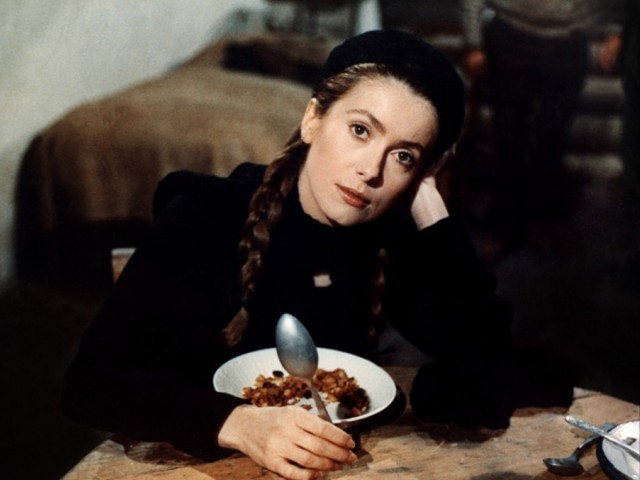
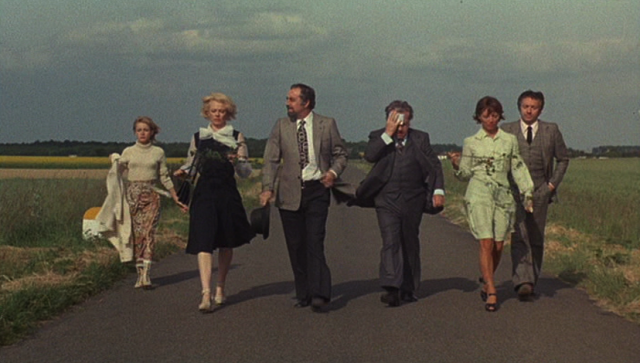
 Winner of the 1972 Oscar for Best Foreign Language Film, Luis Buñuel’s The Discreet Charm of the Bourgeoisie is a sharp, cynical skewering of the European power structure, taking on the high-falutin’ hypocrisy of the government, the military, religion, and, primarily, the wealthy class in hysterical vignettes that center around a group of rich friends trying to sit down and enjoy a meal. But every time they get close, they are ultimately thwarted by miscommunication, a corpse, army maneuvers, terrorists, and, perhaps most bizarrely, fake stage chicken. Buñuel regular Fernando Rey is a hoot as Rafael Acosta, the cocaine-dealing ambassador of Miranda who doesn’t take insults well. Stéphane Audran and Jean-Pierre Cassel play the Sénéchals, a lustful couple desperate to finish a romantic rendezvous even as their guests wait, Julien Bertheau is the local bishop who moonlights as a gardener, Claude Piéplu is an erudite colonel not afraid to share his opinion at a haughty cocktail party, and Maria Gabriella Maione is a sexy stranger who might or might not be a revolutionary after Acosta. Meanwhile, Acosta doesn’t mind making a play for Simone Thévenot (Delphine Seyrig) right under her husband’s (Paul Frankeur) nose. And Ines (Milena Vukotic), one of the Sénéchals’ maids, watches it all with a wonderfully subtle disdain. As if the first half of the film were not surreal enough, the second half includes a series of riotous dream sequences involving ghostly apparitions and a bit of the old ultra-violence, either outwardly related by characters or as cinematic surprises dished out by the masterful Buñuel. None too discreet about its myriad charms, The Discreet Charm of the Bourgeoisie is having a week-long fortieth-anniversary engagement at the Film Society of Lincoln Center in advance of the annual Spanish Cinema Now series, which runs December 7-16 and includes a special sidebar of Buñuel’s Land Without Bread, Tristana, and Viridiana; when you buy a ticket to Discreet Charm, you can get tickets for any Spanish Cinema Now screening for nine dollars by selecting the “Affiliate” option online or showing your ticket stub at the box office.
Winner of the 1972 Oscar for Best Foreign Language Film, Luis Buñuel’s The Discreet Charm of the Bourgeoisie is a sharp, cynical skewering of the European power structure, taking on the high-falutin’ hypocrisy of the government, the military, religion, and, primarily, the wealthy class in hysterical vignettes that center around a group of rich friends trying to sit down and enjoy a meal. But every time they get close, they are ultimately thwarted by miscommunication, a corpse, army maneuvers, terrorists, and, perhaps most bizarrely, fake stage chicken. Buñuel regular Fernando Rey is a hoot as Rafael Acosta, the cocaine-dealing ambassador of Miranda who doesn’t take insults well. Stéphane Audran and Jean-Pierre Cassel play the Sénéchals, a lustful couple desperate to finish a romantic rendezvous even as their guests wait, Julien Bertheau is the local bishop who moonlights as a gardener, Claude Piéplu is an erudite colonel not afraid to share his opinion at a haughty cocktail party, and Maria Gabriella Maione is a sexy stranger who might or might not be a revolutionary after Acosta. Meanwhile, Acosta doesn’t mind making a play for Simone Thévenot (Delphine Seyrig) right under her husband’s (Paul Frankeur) nose. And Ines (Milena Vukotic), one of the Sénéchals’ maids, watches it all with a wonderfully subtle disdain. As if the first half of the film were not surreal enough, the second half includes a series of riotous dream sequences involving ghostly apparitions and a bit of the old ultra-violence, either outwardly related by characters or as cinematic surprises dished out by the masterful Buñuel. None too discreet about its myriad charms, The Discreet Charm of the Bourgeoisie is having a week-long fortieth-anniversary engagement at the Film Society of Lincoln Center in advance of the annual Spanish Cinema Now series, which runs December 7-16 and includes a special sidebar of Buñuel’s Land Without Bread, Tristana, and Viridiana; when you buy a ticket to Discreet Charm, you can get tickets for any Spanish Cinema Now screening for nine dollars by selecting the “Affiliate” option online or showing your ticket stub at the box office.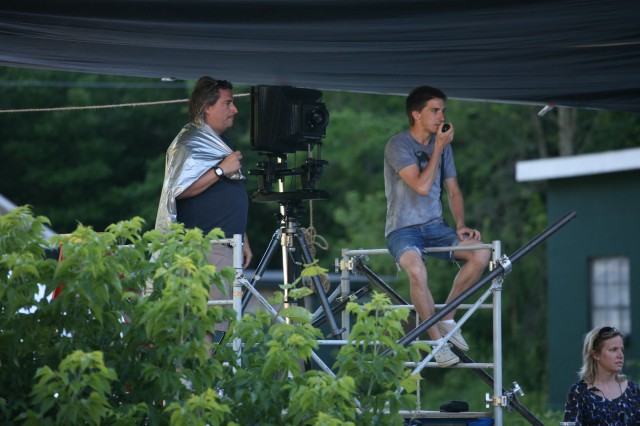
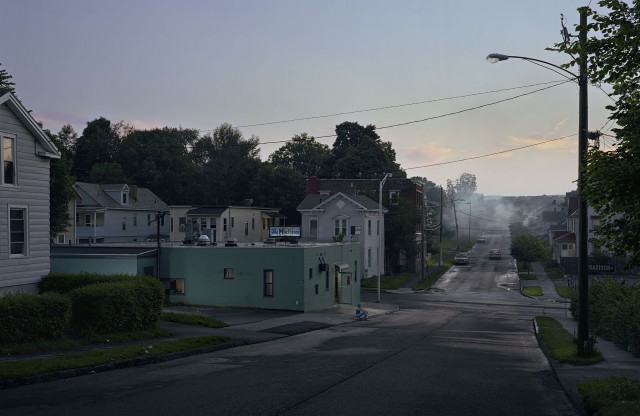
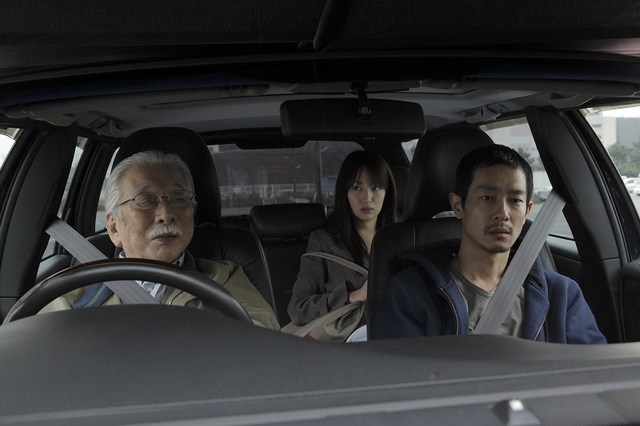
 Following the Tuscany-set
Following the Tuscany-set